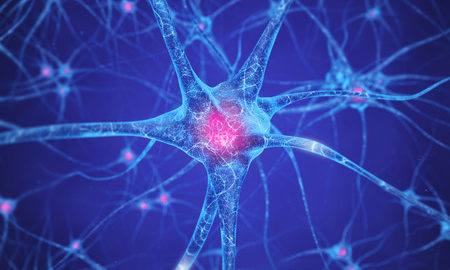Neuron Discover Offers Hope for People with Spinal Cord Injuries

Researchers at California’s Gladstone Institutes have used human stem cells to create a neuron that could potentially benefit people with spinal cord injuries. The special type of neurons created by the group is responsible for transmitting signals from the brain to the spinal cord, a process that is essential for movement control.
Interneurons: Relaying Signals from the Brain to the Spinal Cord
The scientists created a special type of neuron from human stem cells called V2a interneurons and transplanted them into the spinal cords of mice. The transplanted interneurons survived and integrated with native cells.
The signals carried by V2a interneurons from the brain to the spinal cord are ultimately transmitted to the extremities. Interneurons relay signals over long distances along the length of the spinal cord and are critical in muscle movement and coordination as well as breathing. The paralysis associated with spinal cord injuries is caused at least partly due to damaged interneurons and severance of the connection between the brain and the person’s limbs.
New Therapy for Spinal Cord Injuries
Interneurons are an exciting therapeutic approach because they have the ability to reroute following injury to the spinal cord. Senior investigator and study author, Todd McDevitt, Ph.D., at Gladstone explains the goal is to discover methods to rewire damaged circuitry and create new routes for interneuron signal transmission at injured sites.
Currently, there are a number of clinical trials underway for spinal cord injuries, most of which involve neural or oligodendrocyte progenitor cells which can mature into various types of cells and supporting tissue found in the brain and spinal cord. The Gladstone research, however, is a first of its kind in that it attempts to produce V2a interneurons and potentially rebuild long-distance signal pathways.
Neuron Discovery Offers Hope for People with Spinal Cord Injuries
The findings of the study, published in the journal Proceedings of the National Academy of Sciences, show that for the first time, using a mixture of chemicals, scientists were able to coax human stem cells to mature into V2a interneurons.
The challenge was finding the right amount, concentration, and timing of each chemical that would lead to the production of large numbers of interneurons says graduate student Jessica Butts. The mixture was tested and tweaked until the team found the combination of chemicals that induce prolific interneuron production.
In further experiments, the lab-grown V2a interneurons were transplanted into healthy mice by scientists at the University of California, San Francisco. The transplanted cells matured and integrated well with the existing cells in the spinal cords of the mice by forming connections with existing neurons. Following the transplant, there were no movement disorders or impairments noted in the animals.
The team is encouraged by the findings that transplanted interneurons can integrate into native cord tissue and sprout in both directions for long distance signal transmission. The next step is to transplant the V2a interneurons into mice with induced spinal cord injuries to see if the procedure can help restore movement. Ultimately, the goal is to explore the potential of stem-cell-derived interneurons in the treatment of debilitating neurodegenerative disorders in humans, such as ALS (amyotrophic lateral sclerosis).
References:
- https://www.medicalnewstoday.com/releases/317138.php


